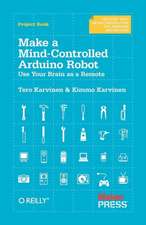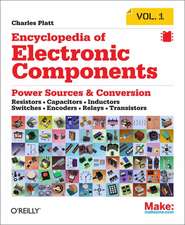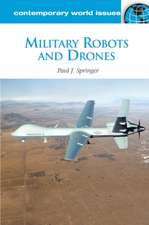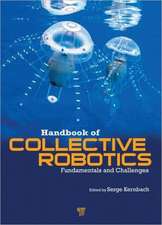The Map-Building and Exploration Strategies of a Simple Sonar-Equipped Mobile Robot: An Experimental, Quantitative Evaluation: Distinguished Dissertations in Computer Science, cartea 13
Autor D. C. Leeen Limba Engleză Paperback – 17 sep 2003
Preț: 272.64 lei
Preț vechi: 340.80 lei
-20% Nou
Puncte Express: 409
Preț estimativ în valută:
52.17€ • 54.61$ • 43.42£
52.17€ • 54.61$ • 43.42£
Carte tipărită la comandă
Livrare economică 31 martie-14 aprilie
Preluare comenzi: 021 569.72.76
Specificații
ISBN-13: 9780521542159
ISBN-10: 0521542154
Pagini: 244
Ilustrații: 92 b/w illus. 23 tables
Dimensiuni: 189 x 247 x 15 mm
Greutate: 0.44 kg
Ediția:Revised
Editura: Cambridge University Press
Colecția Cambridge University Press
Seria Distinguished Dissertations in Computer Science
Locul publicării:Cambridge, United Kingdom
ISBN-10: 0521542154
Pagini: 244
Ilustrații: 92 b/w illus. 23 tables
Dimensiuni: 189 x 247 x 15 mm
Greutate: 0.44 kg
Ediția:Revised
Editura: Cambridge University Press
Colecția Cambridge University Press
Seria Distinguished Dissertations in Computer Science
Locul publicării:Cambridge, United Kingdom
Cuprins
1. Question, context and method; Part I. Starting Points: 2. Maps used in previous research; 3. The maps used in this research; 4. Approaches to exploration; Part II. System Components: 5. The robot; 6. Modelling the sonar sensor; 7. Map construction; 8. Path planning; 9. Localisation; 10. Map quality metrics; Part III. Experiments: 11. Experimental evaluation; 12. Wall–following; 13. The results of localisation; 14 Supervised wall–following; 15. Can a human do any better? 16. Longest lines of sight; 17. Free space boundaries; 18. Summary of experimental results; 19. Conclusion; 20. Directions for further research; Appendices; Bibliography; Index
Descriere
First book to describe a way of determining the best method to use to enable a robot to navigate.
























